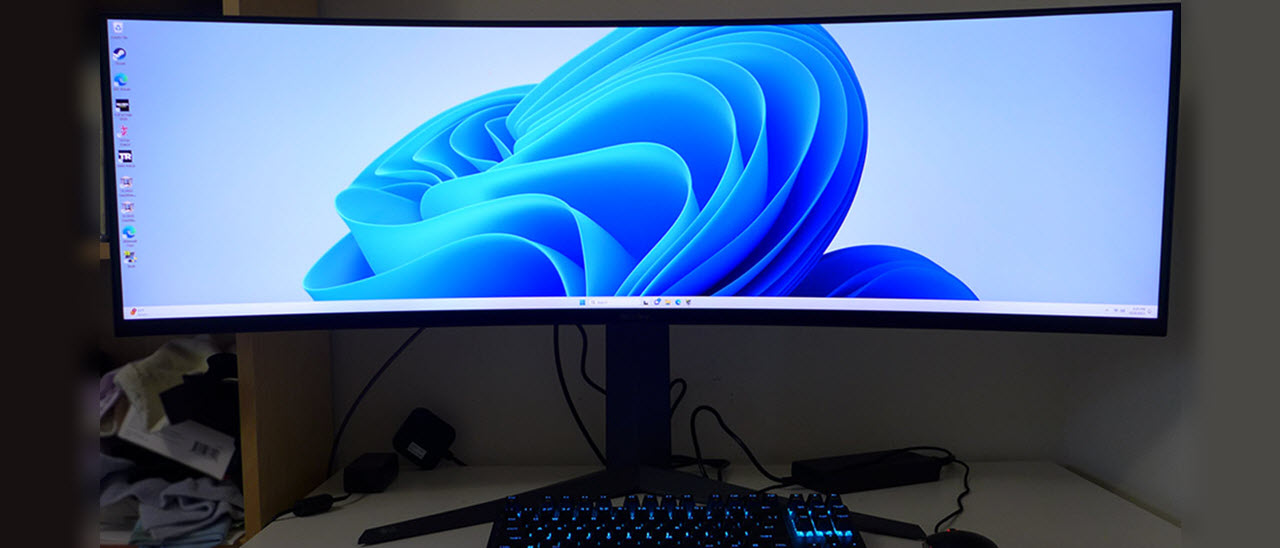Why you can trust Tom's Hardware
The 45GR75DC is on the edge of the calibrate or not question. It isn’t visually perfect when viewing test patterns, but real-world content makes any issues harder to spot. In any case, color is rich and vibrant with a large gamut and natural hues.
Grayscale and Gamma Tracking
Our grayscale and gamma tests use Calman calibration software from Portrait Displays. We describe our grayscale and gamma tests in detail here.
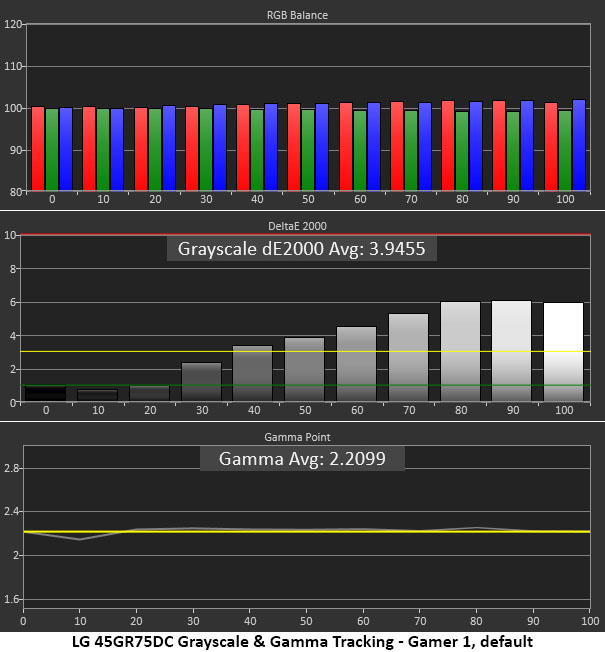
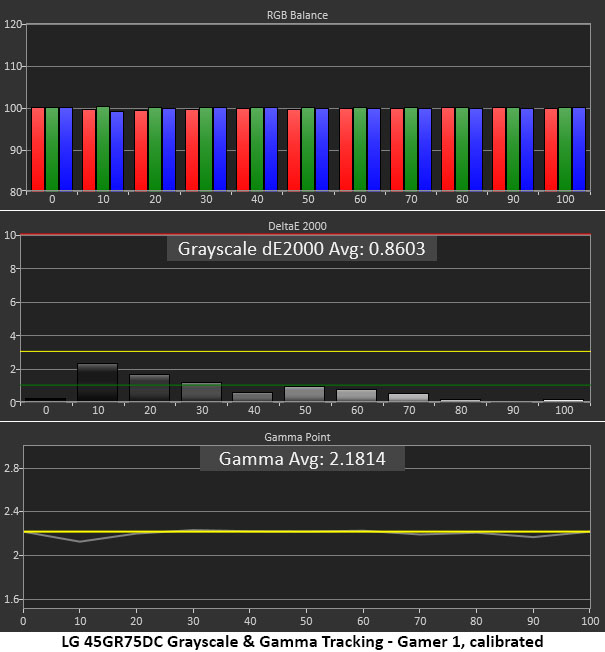
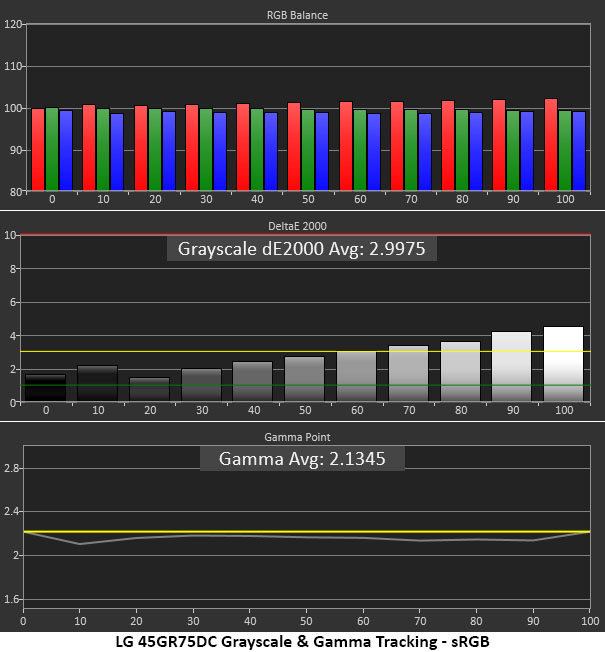
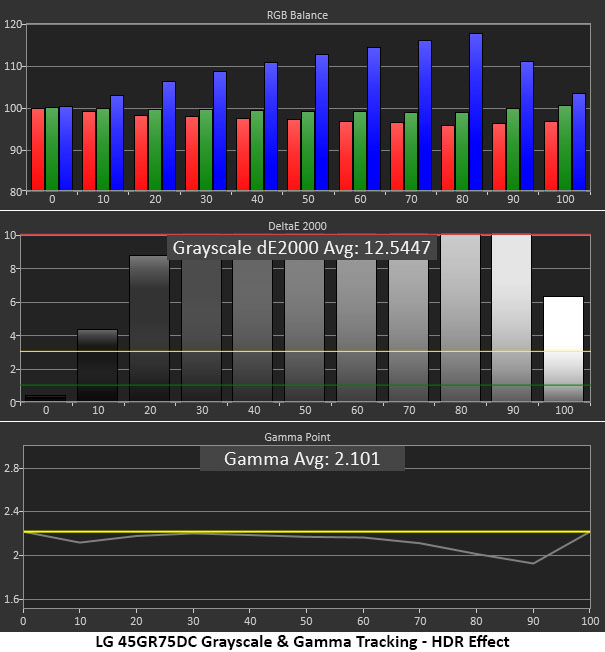
You can see in the first chart that steps above 50% slightly emphasize red and blue. This gives grayscale step patterns a cool tone in the brighter areas of the image. Darker steps are visually perfect. Gamma tracks nearly in step with the 2.2 reference. All visual grayscale errors are eliminated with calibration, and gamma is essentially unchanged. This is reference-level performance.
If you choose the sRGB picture mode, the grayscale errors are very low, with only a slight warmth to the brighter steps. Gamma gets a tad lighter as well. You can adjust brightness in this mode, but all other picture controls are grayed out.
The 45GR75DC includes an HDR emulation feature, but given the results I recorded in this and subsequent tests, I can’t recommend it. The chart above was captured with local dimming set to normal. The blue tint is very obvious, and gamma is very light in highlight areas of the image. That means detail in bright spots will be less clearly rendered. As always, I recommend trying it out to see if you like it. I did not.
Comparisons
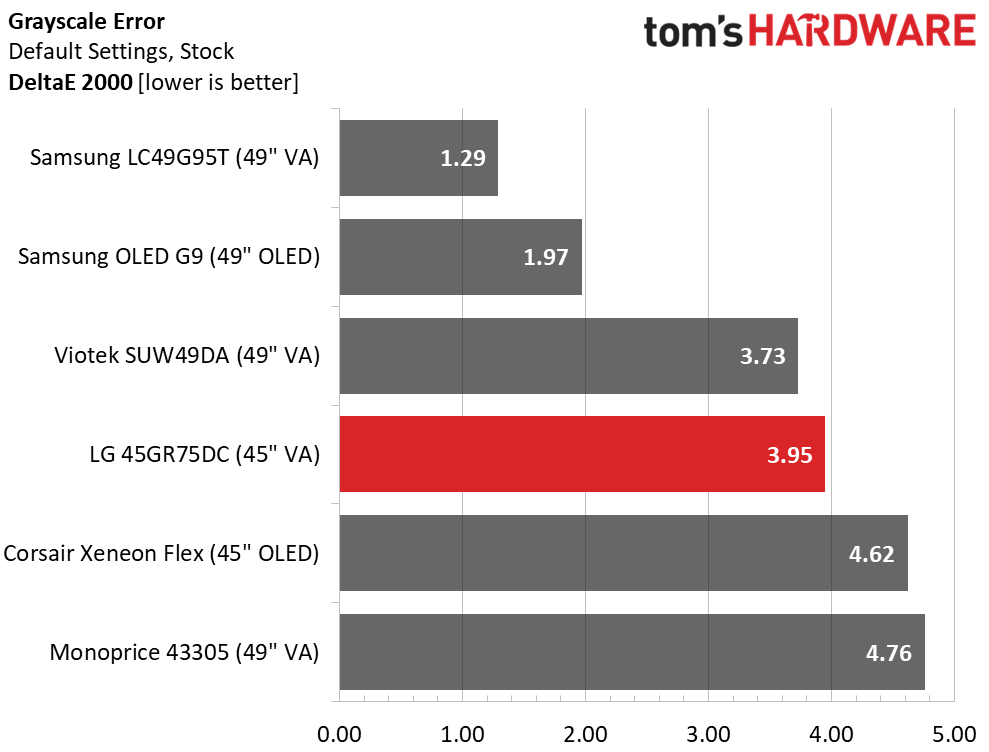
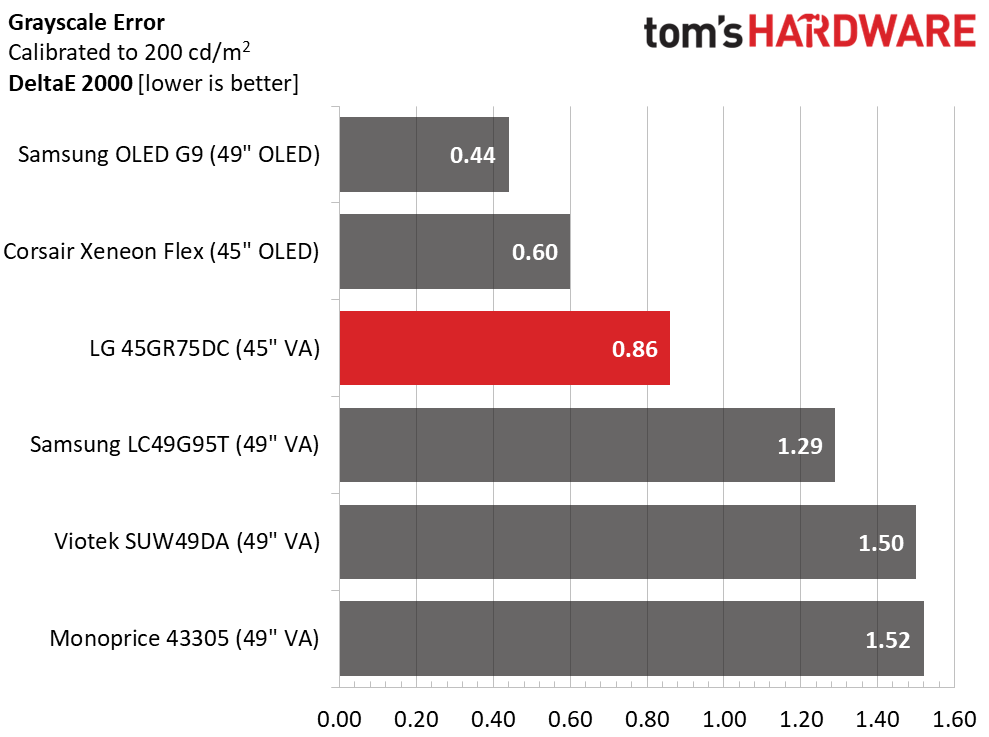
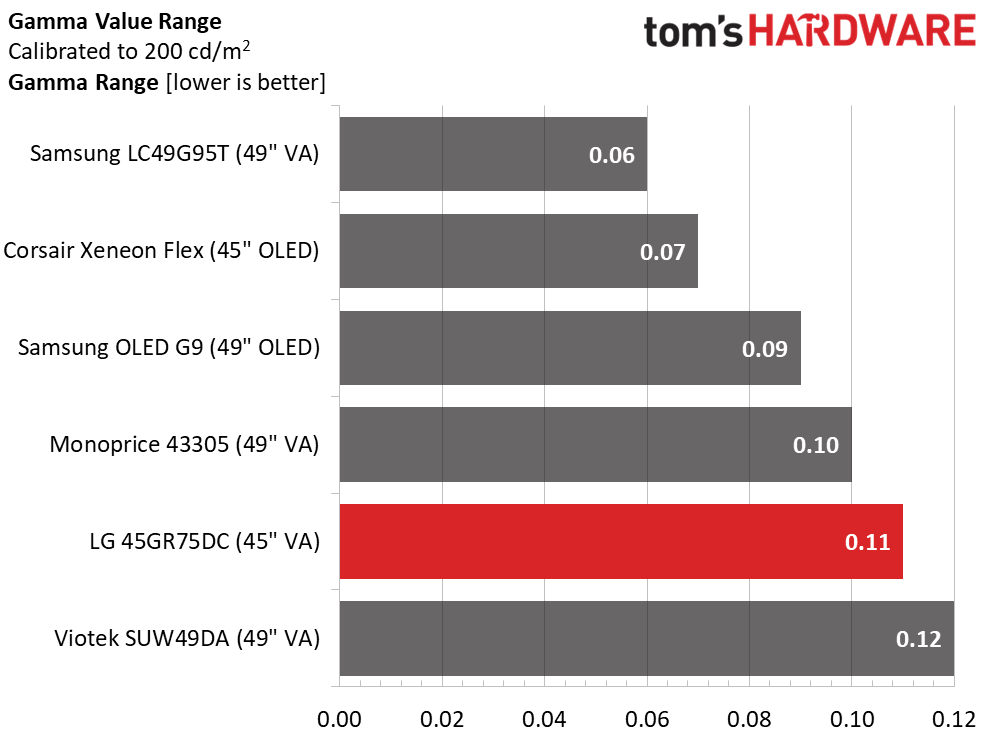
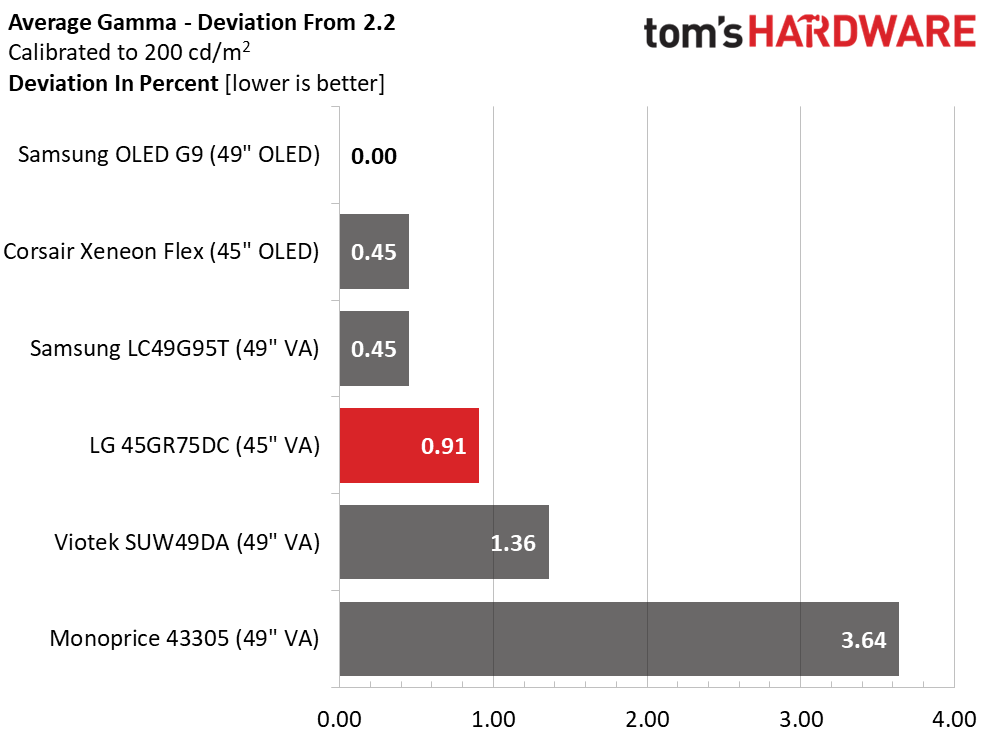
Looking at the numbers, the 45GR75DC’s 3.95dE score suggests that calibration is necessary. In practice, it’s on the edge. Most content looks fine with high contrast and color saturation. Calibration makes a significant improvement, though, so it is worth doing. 0.86dE is pro monitor territory.
Gamma is solid whether you calibrate or not. There are no visible anomalies and measurements show only tiny deviations from the reference. This is excellent performance.
Get Tom's Hardware's best news and in-depth reviews, straight to your inbox.
Color Gamut Accuracy
Our color gamut and volume testing use Portrait Displays’ Calman software. For details on our color gamut testing and volume calculations, click here.
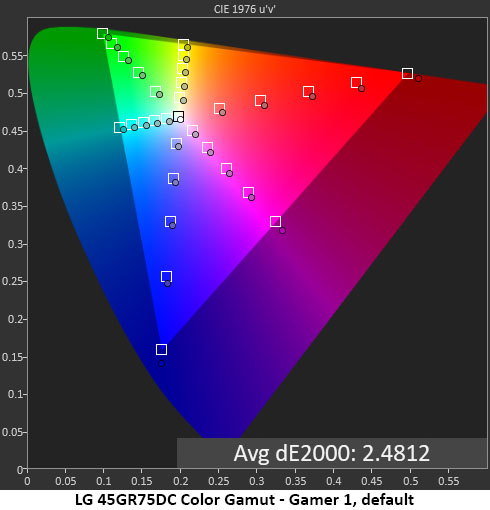
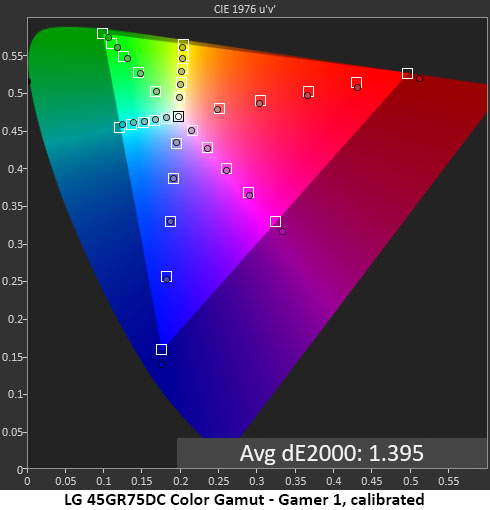

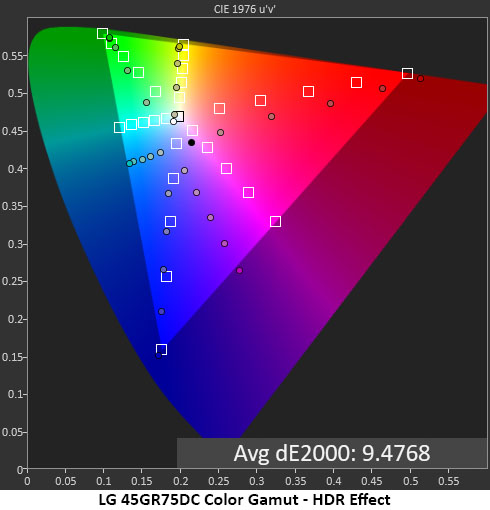
The 45GR75DC’s color test results lend credence to the calibration not needed argument. There are no visible color errors with every point in contact with its target square and a low 2.48dE average. The gamut is wide, too, with excellent coverage of DCI-P3. Calibration tightens things up a bit, but the visual difference is extremely small.
sRGB exhibits similar accuracy with a 1.87dE average error. If you’re color grading or have another need for an accurate SDR gamut, this mode is well suited.
HDR Effect mode takes a liberal interpretation of color with a tremendously cool tone. This creates the perception of high brightness, but the picture ultimately looks flat. In my opinion, HDR emulation modes like this should manipulate gamma only. If it just stuck to the DCI-P3 color gamut and 6500K white point, it would be a viable option.
Comparisons

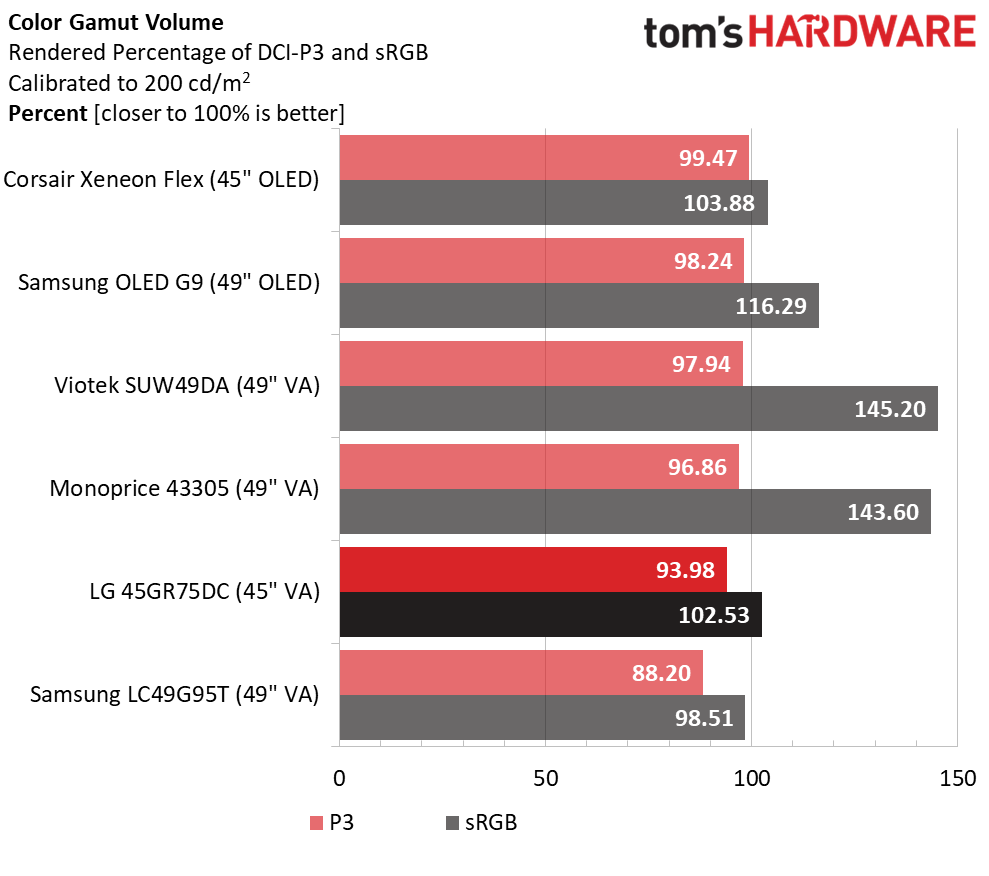
The 45GR75DC’s 1.40dE color error is about as low as it gets for any monitor, gaming and professional included. The entire group delivers very accurate color, so there isn’t a bad one in the bunch once adjusted. This is excellent performance.
At nearly 94% of DCI-P3, the 45GR75DC is a very colorful monitor. Though the Viotek and Monoprice have a bit more coverage, I would still choose the LG for its far superior gaming performance. The OLEDs come very close to 100%, which is typical of the category. They also cost a lot more. The Corsair will run you $2,000. Color for the dollar definitely gives the advantage to LG. And it over-achieves slightly for sRGB too, not a bad thing.
Test Takeaway: The 45GR75DC can be enjoyed in its Gamer 1 mode without calibration, but I recommend making the adjustments. Use my settings from page one and you’ll see an improvement. With high gamut coverage, it’s super colorful for SDR content and accuracy in all aspects is high.
MORE: Best Gaming Monitors
MORE: How We Test PC Monitors
MORE: How to Buy a PC Monitor
MORE: How to Choose the Best HDR Monitor
Current page: Grayscale, Gamma and Color
Prev Page Brightness and Contrast Next Page HDR Performance
Christian Eberle is a Contributing Editor for Tom's Hardware US. He's a veteran reviewer of A/V equipment, specializing in monitors. Christian began his obsession with tech when he built his first PC in 1991, a 286 running DOS 3.0 at a blazing 12MHz. In 2006, he undertook training from the Imaging Science Foundation in video calibration and testing and thus started a passion for precise imaging that persists to this day. He is also a professional musician with a degree from the New England Conservatory as a classical bassoonist which he used to good effect as a performer with the West Point Army Band from 1987 to 2013. He enjoys watching movies and listening to high-end audio in his custom-built home theater and can be seen riding trails near his home on a race-ready ICE VTX recumbent trike. Christian enjoys the endless summer in Florida where he lives with his wife and Chihuahua and plays with orchestras around the state.
-
Roland Of Gilead Have to admit, I really do like these Ultra wide monitors. My issues is that I'm partially blind in one eye, so something this wide would be ruined on me.Reply
Nice to dream though. -
brandonjclark Reply
What is it you like about them? I find them downright useless. It's like your squinting the entire time or something.Roland Of Gilead said:Have to admit, I really do like these Ultra wide monitors. -
anonymousdude Replybrandonjclark said:What is it you like about them? I find them downright useless. It's like your squinting the entire time or something.
I mean it's just a borderless dual 16:9 monitor setup. So if you're accustomed to that setup, it doesn't feel out of place at all. It's also neater since you have one less stand/arm and cables.
Gaming wise it's more immersive. Downside is a lot of games don't properly support it. -
brandonjclark Replyanonymousdude said:I mean it's just a borderless dual 16:9 monitor setup. So if you're accustomed to that setup, it doesn't feel out of place at all. It's also neater since you have one less stand/arm and cables.
Gaming wise it's more immersive. Downside is a lot of games don't properly support it.
Aspect ratio does not equal dimensions. Take a look...
https://www.tomshardware.com/reviews/dell-s3220dgf-gaming-monitor-review-high-performance-work-and-play
My monitor ^
Dell S3220DGFPanel Dimensions WxHxD w/base27.9 x 18.6-24.4 x 9.8 inches (709 x 472-620 x 249mm)
LG UltraGear 45GR75DCPanel Dimensions WxHxD w/base42.7 x 17.7-22 x 12.9 inches (1085 x 449-559 x 328mm)
Notice the height.* This thing is literally shorter, by nearly an entire inch. Keep in mind this is a 45inch vs a 32inch, too.
Sure, the aspect ratio might be the same, but it's literally shorter, by a lot. -
brandonjclark Here is a monitor that I think is nice which is very wide, but also very tall.Reply
https://www.dell.com/en-us/shop/alienware-38-curved-gaming-monitor-aw3821dw/apd/210-axvg/monitors-monitor-accessories -
anonymousdude Replybrandonjclark said:Aspect ratio does not equal dimensions. Take a look...
https://www.tomshardware.com/reviews/dell-s3220dgf-gaming-monitor-review-high-performance-work-and-play
My monitor ^
Dell S3220DGFPanel Dimensions WxHxD w/base27.9 x 18.6-24.4 x 9.8 inches (709 x 472-620 x 249mm)
LG UltraGear 45GR75DCPanel Dimensions WxHxD w/base42.7 x 17.7-22 x 12.9 inches (1085 x 449-559 x 328mm)
Notice the height.* This thing is literally shorter, by nearly an entire inch. Keep in mind this is a 45inch vs a 32inch, too.
Sure, the aspect ratio might be the same, but it's literally shorter, by a lot.brandonjclark said:Here is a monitor that I think is nice which is very wide, but also very tall.
https://www.dell.com/en-us/shop/alienware-38-curved-gaming-monitor-aw3821dw/apd/210-axvg/monitors-monitor-accessories
I mean yeah, aspect ratio and dimensions aren't the same considering that the ratio is width/height or more accurately our case horizontal/vertical pixels. Also the dimensions youre looking at are with the base. This LG is equivalent to 2 x 25in 16:9 monitors next to each other, so it's not going to be as tall as a 32in 16:9 or 38in 21:9 which are roughly the same height. The difference between the LG and the two you listed is around 3.5 - 4in in height. So yeah a big difference in absolute height. I'm not going to deny that. My point though is that if you've ever used 2 x 20, 22, 24, etc 16:9 setups (i.e your common office setups) this is basically the the same thing just without the border in the middle. Personally I've never found those setups to be "squinty" for lack of a better word.
If your preference is for absolute height, I get it. Everyone has their own preferences and it really depends on your use case. Out of curiosity, do you find yourself squinting at anything smaller than than 16in of height in a monitor? Even a 25in 16x9 has a foot of height. Do you find things like phones and other small displays "squinty"? -
StevoReno The article reviews and gives the discounted price for the LG 45GR75DC but links to it's less capable and cheaper twin, LG 45GR65DC, on Amazon. The difference is the 45GR75DC has USB-C for video input and 90W power delivery.Reply
